Cordyline Plant Care Guide - Characteristics, Watering, Best Varieties
Cordyline is a highly universal, and at the same time impressive houseplant. It gained its popularity thanks to the characteristic colorful leaves. It's usually picked for its palm-like habit. Cordyline plants perfectly fit into any design. They also look beautiful in Scandinavian and modern style interiors. Are you wondering about the needs of cordyline and whether it's difficult to grow? Check how to take care of the plant.
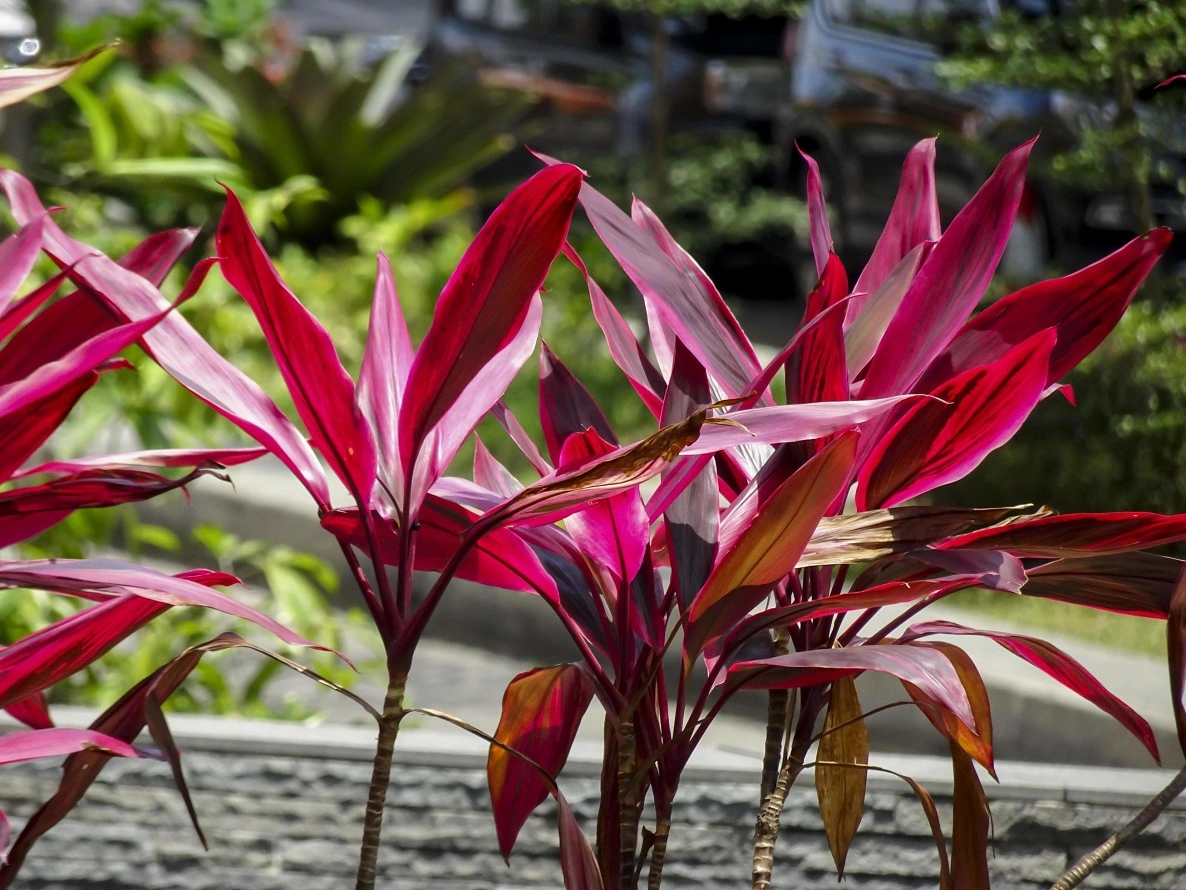
Cordyline – the plant’s origins and characteristics
Cordyline is a plant some refer to as “cabbage tree.” It’s native to New Zealand and Australia, as well as Oceania islands and Indochina. Certain varieties also appear in India and tropical climate of South America.
Because of its palm-shaped habit and the option to be grown in a container, cordyline plants became a popular choice in many countries across the globe. As a houseplant, if provided with good conditions, it can grow up to 1.5 meters (4.92 feet) tall. In nature, it can reach a height of 15 meters (ca. 49 feet).
This plant has characteristic leathery leaves that have different colors depending on the variety. When blooming, cordyline develops a lot of flower clusters with tiny, intense-smelling flowers.
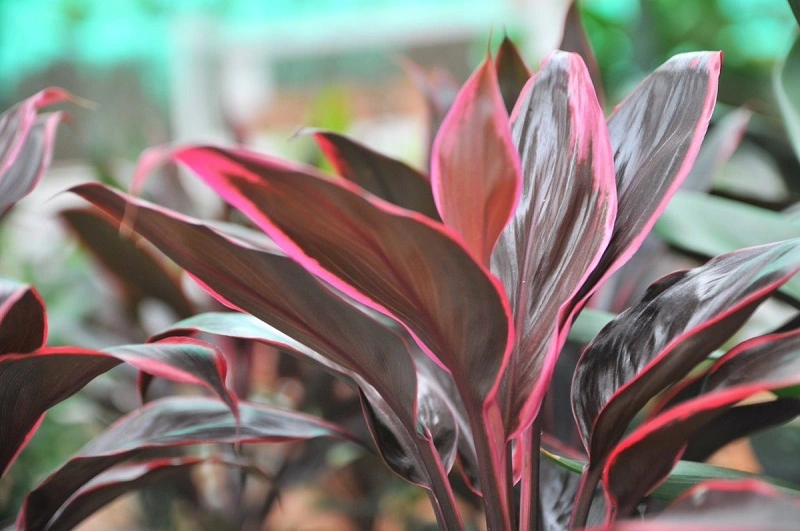
The most popular cordyline varieties
Cordyline australis, commonly known as the Australian cabbage tree, and Cordyline terminalis – Ti plant are the most popular varieties of cordyline. Slender palm lily - Cordyline stricta is a less commonly known variety.
The most popular cultivars of the cabbage tree include:
- Cordyline ‘Purpurea’ – its leaves have a characteristic red and purple color,
- Cordyline ‘Red Star’ – with red-brown colored leaves,
- Cordyline ‘Torbay Dazzler’ – the leaves are green with distinct cream edges,
- Cordyline ‘Sundance’ – its leaves are green with a red stripe in the middle,
- Cordyline ‘Albertii’ – the leaves are matte-green with a delicate red blush and cream stripes on the edges.
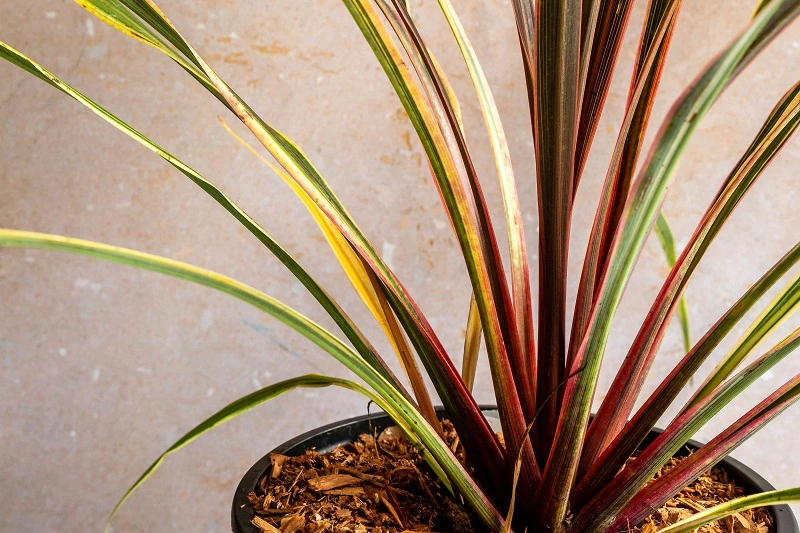
Cordyline plant – care and needs
Cordyline requires a bright location with indirect, moderate lighting. If deciding on varieties with colorful leaves, pick a much more illuminated spot. It’s necessary if you want to achieve the color of the particular variety. Because of its origins, the plant is grown mainly in containers. In summer, when the temperatures are close to its natural habitat, you can decide to put the plant on the balcony or the patio.
Cordyline plants need soil of adequate permeability. The mix should be rich in humus, of neutral or acidic pH levels. You can prepare it yourself of decide on potting mixes available in garden stores.
If you decide to grow this plant in your home, you cannot forget about repotting. Young cordylines should be transplanted once a year. As for older plants, once every 3-4 years is enough.
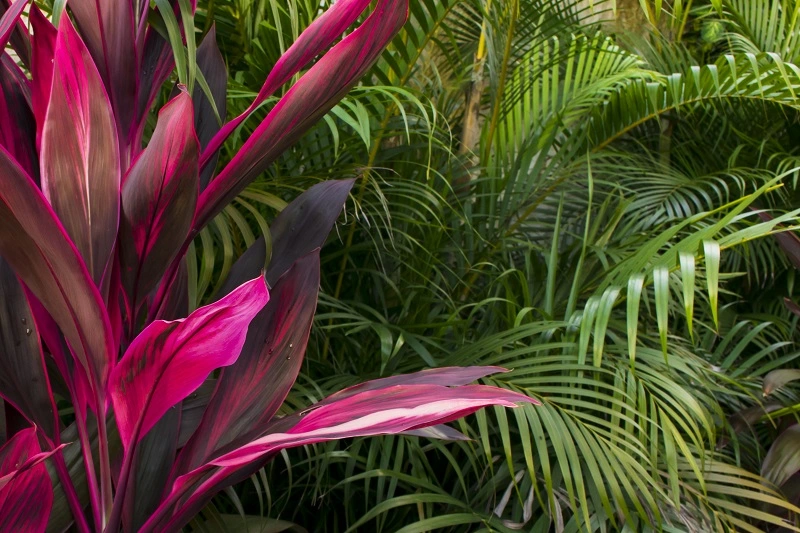
How to water cordyline?
As a houseplant, cordyline requires regular and frequent watering. It’s exceptionally sensitive to lack of water, which might be harmful. Excessive dryness might have a serious impact on the plant’s health and appearance.
Cordyline owners should also remember that the plant doesn’t tolerate waterlogged soil. After watering, the excess water should be poured out of the saucer. Also, limit watering frequency in winter up to 1-2 times per week.
Because of it origins in tropical climates, make sure to mist the plant’s leaves. Placing it next to an air humidifier is a popular solution.
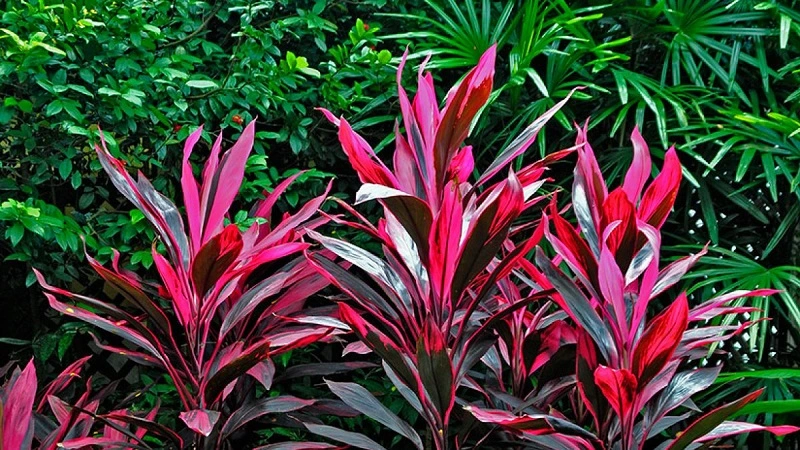
Do cordyline plants need feeding?
When deciding on a cordyline plant, one has to remember about seasonal feeding. Starting from March, the plant should receive fertilizer when being watered, until the end of August. Repeat it once every 2-3 weeks. Products designed for potted palms are the best option.
How to propagate cordyline?
Cordylines can be propagated using top or side cuttings. 8-centimeter long cuttings are best to be harvested in spring. The next step involves rooting them and keeping in 24°C (75.2°F). You can encourage the process by using rooting hormone and plastic wrap to provide the plant with greenhouse conditions – perfect for its quick development.
Cordyline – the most dangerous pests and diseases
Issues resulting from improper handling of the plant are the most popular problems when taking care of cordylines. If you observe the leaves began to dry and turn brown on their tips and edges, it means you probably overwatered the plant or didn’t water it enough.
If the leaves begin to roll or turn soft, the plant got probably too cold. Remember that cordyline doesn’t like low temperatures, and a too cold interior is the main reason why its leaves start to die back. It can be observed if the plant is exposed to a draft. For this reason, cordyline plants require room temperatures higher than 18°C.
The plant might also suffer from diseases caused by fungi carried through soil. Attacked by pathogens, the plant turns yellow and withers. The leaves might develop typical for fungi spots or mold coating. You can try to save a cordyline that has been attacked by fungi using antifungal products. If they don’t work, the plant has to be thrown away.
Spider mites and thrips are the most commonly encountered pests attacking cordyline plants. They are easy to get rid of using adequate products purchased in a garden store. If the infestation is not too big, you can try natural remedies using e.g., onions or garlic.
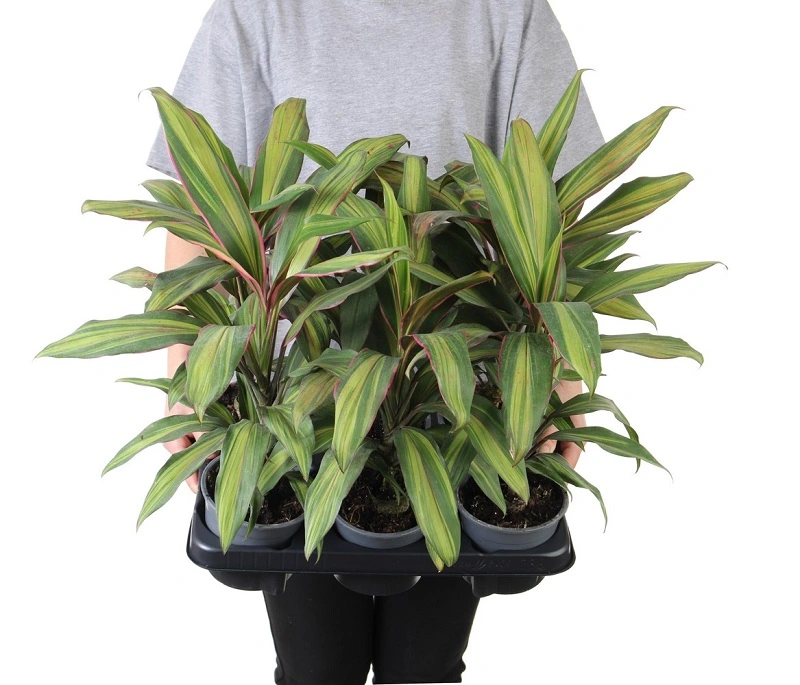
📍 What does cordyline australis look like?
Cordyline might be confused with a palm. For this reason, some people refer to cordylines as palms. The plant has a tapering and bushy habit. With good care, it can grow quite tall.
📍 Where to buy cabbage tree?
Cordyline australis is an increasingly popular houseplant. For this reason, it's widely available. Search for this species in garden markets or plant nurseries. Sometimes, cordylines can be found in flower shops.
📍 How much does cordyline australis cost?
Cordyline plants are not the cheapest, but their price depends on their size. Small plants are the most commonly available. In such a case, a single plant usually doesn't cost more than $15.
📍 When to plant cabbage tree?
Cordyline is typically a houseplant, so you can plant in a container during any season. Regardless, spring is the best time to do it. This way, the plant has enough time to get stronger before winter.
Featured articles




